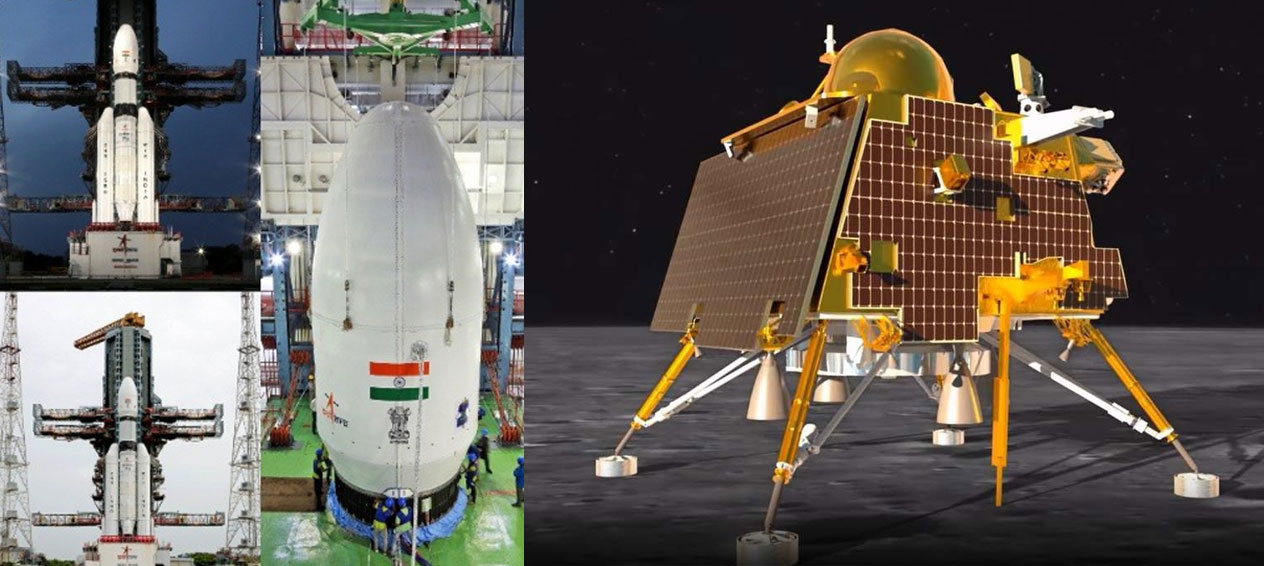Table of Contents
ToggleChandrayaan-3: Indian lunar exploration mission under the Chandrayaan programme of ISRO
In a momentous achievement that has once again thrust India onto the global space exploration stage, the Indian Space Research Organisation (ISRO) successfully launched Chandrayaan-3, its third lunar mission. This remarkable feat not only showcases India’s growing prowess in space technology but also reaffirms its commitment to advancing scientific knowledge and exploring the mysteries of the cosmos.
The Genesis of Chandrayaan-3: A Journey to Remember
Chandrayaan-3 is the latest iteration of India’s Chandrayaan program, which was initiated with the launch of Chandrayaan-1 in 2008.
Chandrayaan-1 achieved significant milestones, including the discovery of water molecules on the lunar surface.
Its successor, Chandrayaan-2, launched in 2019, aimed to further enhance our understanding of the Moon by deploying an orbiter, lander, and rover. While the orbiter successfully entered lunar orbit and continues to provide valuable data, the lander’s attempt to soft-land on the Moon encountered challenges, resulting in partial success.
The Chandrayaan-2 mission was a testament to ISRO’s dedication and scientific acumen, but it also underscored the complexity and inherent risks of space exploration.
Leveraging the lessons learned from Chandrayaan-2, ISRO embarked on the Chandrayaan-3 mission with renewed determination and a comprehensive plan to ensure a successful soft landing on the lunar surface.
Watch Chandrayaan-3 Mission Soft Landing live telecast: Moon Mission - ISRO News
The Triumph of Technology: Chandrayaan-3's Design and Development
Chandrayaan-3’s design and development represented a blend of innovative engineering and meticulous planning.
The mission comprised two major components: the lander and the rover. Learning from the previous mission’s challenges, ISRO focused on enhancing the lander’s propulsion system, ensuring a more controlled descent and a higher chance of a successful soft landing.
One of the significant advancements in Chandrayaan-3 was the incorporation of state-of-the-art autonomous navigation systems. These systems allowed the lander to make real-time decisions during its descent, adjusting its trajectory based on the Moon’s changing conditions. This autonomous navigation capability significantly reduced the dependence on ground control and increased the mission’s overall resilience.
The rover, equipped with advanced scientific instruments, was designed to explore the lunar surface with greater precision. Its primary objectives included analyzing the composition of the lunar soil, studying the distribution of elements and minerals, and conducting experiments to understand the Moon’s geological history.
A Flawless Launch: ISRO's Commitment to Excellence
The launch of Chandrayaan-3 marked a significant milestone in India’s space exploration endeavors. The GSLV Mk III, one of ISRO’s most reliable launch vehicles, was entrusted with the responsibility of propelling the mission towards the Moon. The flawless execution of the launch was a testament to ISRO’s meticulous preparation, rigorous testing, and dedication to achieving excellence.
Throughout the launch process, ISRO maintained transparent communication with the public, sharing updates and progress milestones. This approach not only instilled confidence in the nation’s capabilities but also inspired a sense of pride and enthusiasm among citizens.
The Journey to the Lunar Surface: Navigating Challenges
The journey from Earth to the lunar surface presented its own set of challenges. Space exploration is inherently unpredictable, and even with the most advanced technology, unexpected events can occur. Chandrayaan-3’s navigation and propulsion systems were put to the test as it traversed the vast expanse of space.
One of the mission’s critical phases was the lunar descent. This phase required precise coordination between the lander’s autonomous navigation systems and the ground control team. As the lander approached the lunar surface, tension and excitement were palpable, both within ISRO and among the millions of people following the mission’s progress.
A Historic Touchdown: Soft Landing on the Moon
The moment of truth arrived as Chandrayaan-3’s lander initiated its descent towards the lunar surface. The entire nation held its breath as telemetry data streamed into ISRO’s mission control center. The successful activation of the lander’s propulsion system and the flawless execution of its descent maneuvers filled the room with applause and relief.
In an awe-inspiring display of technological precision, Chandrayaan-3’s lander gently touched down on the Moon’s surface, marking India’s second successful soft landing attempt. The achievement was met with jubilation across the country, and celebrations erupted as the news spread. The lander’s safe landing opened the door to a new era of lunar exploration, where India would contribute to the global scientific community’s understanding of the Moon’s geology, resources, and potential for future human missions.
Scientific Discovery and Future Prospects
Chandrayaan-3’s rover immediately began its scientific mission, collecting data and conducting experiments that promised to unravel some of the Moon’s longstanding mysteries. The rover’s mobility and advanced instruments allowed it to traverse the lunar surface, analyzing various terrains and uncovering clues about the Moon’s history and evolution.
One of the significant discoveries made by the rover was the identification of previously unknown minerals in a specific region of the Moon. This finding not only expanded our understanding of lunar geology but also raised intriguing questions about the Moon’s formation and its relationship to Earth’s geological processes.
International Collaboration and Inspiring the Next Generation
Chandrayaan-3’s success not only contributed to scientific knowledge but also fostered international collaboration. The mission’s achievements were shared with the global scientific community, paving the way for joint research initiatives and the exchange of data and expertise.
Moreover, Chandrayaan-3 ignited a spark of curiosity and inspiration among the youth of India and around the world. The mission showcased the possibilities of scientific exploration and encouraged students to pursue careers in STEM fields. Schools and universities organized events, workshops, and lectures to celebrate the mission’s success and motivate the next generation of scientists, engineers, and explorers.
Conclusion: Paving the Path for Future Exploration
Chandrayaan-3’s triumphant success stands as a testament to India’s unwavering commitment to pushing the boundaries of space exploration. Through innovative technology, meticulous planning, and a spirit of perseverance, ISRO demonstrated its ability to overcome challenges and achieve remarkable feats.
The mission’s success not only bolstered India’s standing in the global space community but also inspired a renewed enthusiasm for space exploration within the country. As ISRO sets its sights on future missions, including potential crewed missions and international collaborations, Chandrayaan-3’s legacy will serve as a guiding light, reminding us of the boundless potential of human ingenuity and our collective thirst for knowledge.




